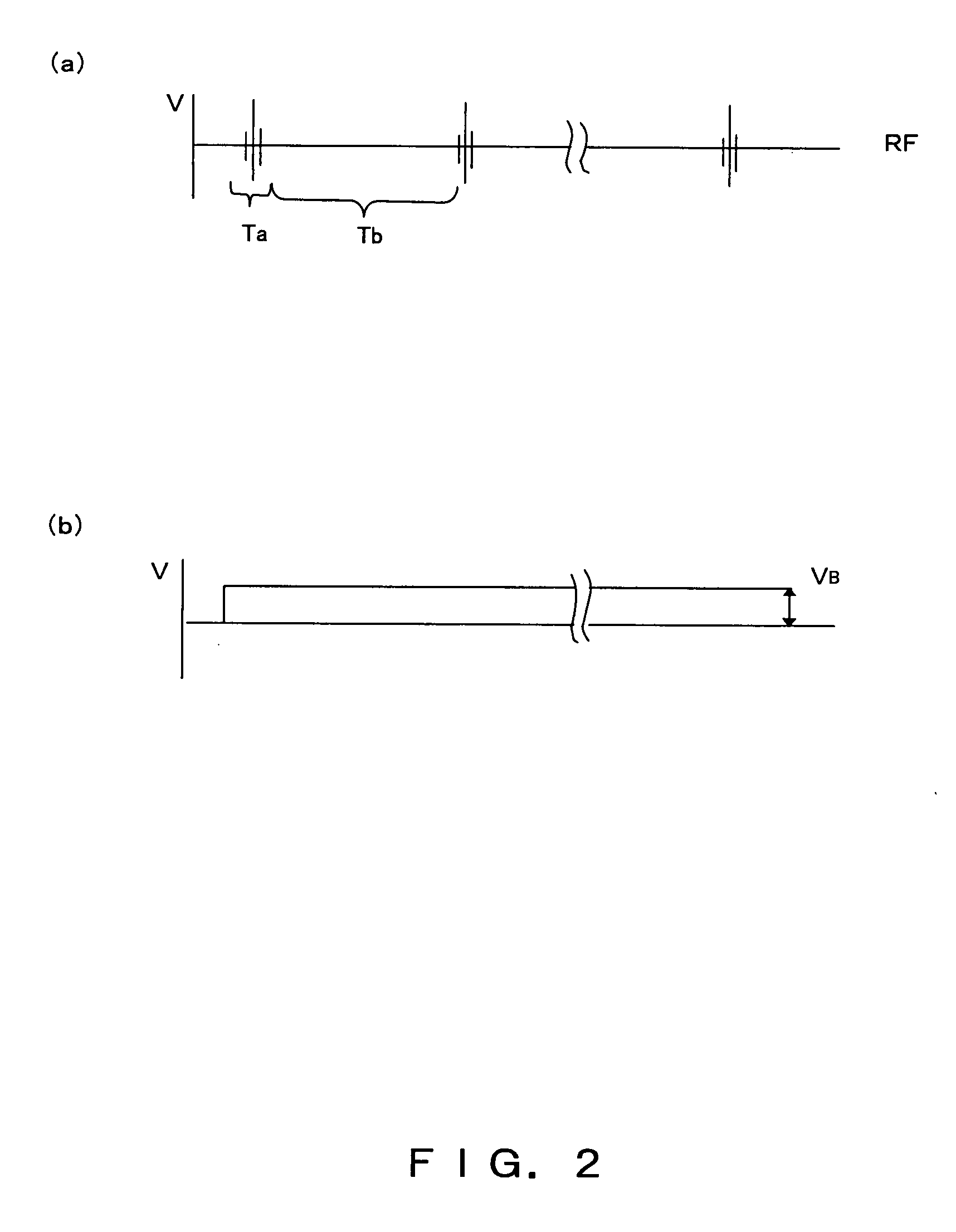Capacitive micromachined ultrasonic transducer (cMUT) and its production method
a micro-machined ultrasonic transducer and production method technology, applied in mechanical vibration separation, medical science, diagnostics, etc., can solve the problem of excessive drive voltage effective valu
- Summary
- Abstract
- Description
- Claims
- Application Information
AI Technical Summary
Benefits of technology
Problems solved by technology
Method used
Image
Examples
first embodiment
[0053]FIG. 3 is an overall cross-section diagram of a fundamental structure of a cMUT cell according to the present embodiment. The cMUT cell comprises a silicon substrate 2, a dielectric film 9, a bottom electrode 4, a membrane 6, a cavity 7, an upper electrode 5, a Via hole 8, and a wiring film 15, wherein, the cMUT 1 comprises a plurality of cMUT cells.
[0054] The membrane 6 is an vibrating film with edge parts fixed by membrane support parts 3. An upper surface of the membrane 6 is equipped with the upper electrode 5. A dielectric film 9 (e.g., SiO2) is formed on a front surface (i.e., the bottom part of a concave part) of the silicon substrate 2 between the membrane support parts 3 on which the bottom electrode 4 is equipped. The bottom electrode 4 is electrically connected to the silicon substrate 2 through the Via hole 8, and a conductor of the same material as the bottom electrode 4 is further laid thereunder. A patterned interconnection film 15 is connected to the upper ele...
second embodiment
[0079]FIG. 9 is an overall cross-section diagram of a cMUT cell's fundamental structure according to the present embodiment. The cMUT cell comprises a silicon substrate 52, dielectric films 58 and 59, a bottom electrode 54, membrane support parts 53, a membrane 56, an upper electrode 55, and a wiring film 65, with cMUT 51 comprising a plurality of the cMUT cells. The differences between this embodiment and the first embodiment are the placement of the bottom electrode 54 on the upper surface of the silicon substrate 52 followed by forming the dielectric film 59, and forming the dielectric film 58 over the upper electrode 55. In this configuration, the Via hole equipment is not required because the bottom electrode 54 contacts with the silicon substrate 52. The numeral 57 is a cavity. Incidentally, the membrane 56 is constituted using a plurality of membrane films in terms of the production process, the same as in the first embodiment.
[0080] The above described configuration makes i...
third embodiment
[0090]FIG. 12 is an overall cross-section diagram of a cMUT cell's fundamental structure according to the present embodiment. The cMUT cell comprises a silicon substrate 72, a dielectric film 79, a bottom electrode 74, membrane support parts 73, a membrane 76, an upper electrode 75, and a wiring film 85. The cMUT 71 is comprised of a plurality of the cMUT cells. Incidentally, the numeral 77 is a cavity. The differences from the first embodiment and this embodiment are the placement of the bottom electrode 74 on the upper surface of the silicon substrate 72 followed by forming the dielectric film 79, and forming the upper electrode 75 on the lower surface of the membrane 76 (i.e., the surface on the air cavity 77 side). In this configuration, the Via hole equipment is not required because the bottom electrode 74 contacts with the silicon substrate 72.
[0091] The above described configuration makes it possible to obtain a more stable effect (i.e., a state corresponding to a DC bias vo...
PUM
 Login to View More
Login to View More Abstract
Description
Claims
Application Information
 Login to View More
Login to View More - R&D
- Intellectual Property
- Life Sciences
- Materials
- Tech Scout
- Unparalleled Data Quality
- Higher Quality Content
- 60% Fewer Hallucinations
Browse by: Latest US Patents, China's latest patents, Technical Efficacy Thesaurus, Application Domain, Technology Topic, Popular Technical Reports.
© 2025 PatSnap. All rights reserved.Legal|Privacy policy|Modern Slavery Act Transparency Statement|Sitemap|About US| Contact US: help@patsnap.com



